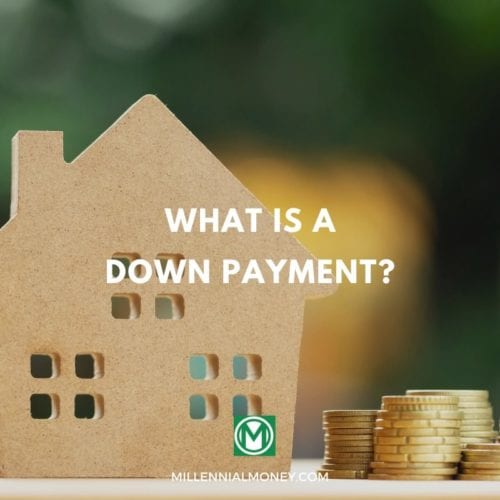So, you need a loan. Congratulations! You are among the many people worldwide whose imagination has stretched beyond your current circumstances and encouraged you to imagine possibilities that don’t yet exist.
Maybe you want a new car. Maybe you want to start your own business. Maybe you have an important event coming up, like a vacation or a wedding, and you want to enjoy it to the fullest.
Or maybe you want to fulfill the quintessentially American dream of buying your own home on a piece of land that belongs to you.
The bad news? You don’t have the money for such a possibility. But wait, there are a number of loans that can help bring these possibilities into reach. And we’re here to tell you about them.
So settle in. Bring your imagination. Also, bring your calculator. It’s time to learn about the common types of loans.
Different Types of Loans
Jump to our loan comparison tool below to find personalized offers.
Auto Loans
An auto loan is a type of closed-end that most Americans are familiar with. You can get an auto loan directly from the dealership, or you can shop around at your local banks.
There are also a number of national lenders that offer auto loans with competitive interest rates. Typically, it’s best to put a down payment on your car loan by either trading in a car with a decent market value or putting forth cash for the down payment.
That said, a down payment is not totally necessary and there are a number of dealerships that offer cash back at the time of signing when you finance through the dealership directly.
This cash back can go towards a “down payment” that reduces the principal on the loan. There are also many 0% financing deals for car loans that you can qualify for with excellent credit.
Business Loans
Most businesses are, to start, funded by people. This means personal savings, credit cards, and family money. But when it comes time to take your business to the next level, that’s when a business loan becomes essential. Business owners can take out loans for buying new equipment, new brick-and-mortar assets, purchasing inventory, or for managing cash flow.
Business loans are for entrepreneurs, small businesses, and businesses looking to leverage their resources to grow in revenue and size. The U.S. Small Business Administration (SBA) is thought of as the best resource for small business loans.
The SBA offers many different loan options depending on each business’s needs, but here’s the thing about the SBA – the applications are very in-depth! There are peer-to-peer lending resources like Prosper and SoFi that have a rather seamless application process for personal loans that can be applied towards a personal business.
If you already have a banking relationship and assets to borrow against as collateral, you can also rely on options like working capital loans and business lines of credit.
Home Loans
Home loans, otherwise known as mortgages, are given through your bank. To get a mortgage, you need to meet with a loan officer who will run your mortgage credit score, verify your income, and tell you how much house you can afford.
It’s best to get pre-approved by a bank before you go shopping for homes. That’s because you want to have an idea of how much you can afford before you get attached to a new property.
Since a mortgage is tied to your home, defaulting on your home loan will result in foreclosure. Just like in Monopoly, foreclosure is when the bank shows up to claim its property.
Why are banks allowed to foreclose on your home? Because until you pay off your mortgage, your home is legally in the bank’s possession.
Typical mortgages are a 30 year loan, but you can refinance your mortgage any time to lower your interest rate. Mortgage interest rates are usually between 3 and 5 percent, but this number fluctuates with the market.
Personal Loans
Personal loans are the most general kind of loan because they don’t have one specific purpose.
You can take out a personal loan to go on vacation, pay for a wedding, or redecorate your home. Some people even take out personal loans to install a pool in their property.
But, like all loans, personal loans are more than just “free money” – you are typically charged interest rates of between 8-18% on personal loans. So you’ll have to pay it back…and then some.
That’s why, if you are going to take out a personal loan, it should be for a good reason. If you’re putting in a pool, find out what return on investment (ROI) that purchase would give you on your home value?
If you are redecorating – why? Is it to build a functional home office for a business that will generate more revenue? Or simply, because you want to?
Even though personal loans tend to have lower interest rates than credit cards, it is still a form of debt. That said, sometimes people use personal loans when they are in between jobs because they know their new salary will cover the cost of the loan, and they need the cash flow to pay their bills.
If a personal loan is going to keep you from destroying your credit history, there are a few options through peer-lending sites that give you flexible options and cash deposited into your checking account in a matter of days. Definitely check to see if there are prepayment penalties on your personal loan, because this is one type of loan it’s worth paying off quickly and moving on.
Student Loans
Student loans can either be federal or private student loans, and these loans are paid directly to your university or college.
If you qualify for excess student loans – meaning you qualify for more money than the cost of your tuition – you will receive the excess disbursement in the form of a check or a direct deposit.
Federal student loans offer the lowest interest rates, flexible repayment policies, and are all-in-all considered to be the “easiest” student loan you can get. Federal loans are based on your EFC – or “expected family contribution.”
Until the age of 26, your entire family’s income (yes, your parents’ income) will be used to determine how much federal assistance you qualify for. After 26, the amount is calculated based entirely on your own financial situation.
The maximum federal student loan amount per year is $12,500 for undergraduate students and $20,500 for graduate or professional students.
Debt Consolidation Loans
If you have a few thousand dollars or so accumulated on several different credit cards, making all of those monthly payments can be overwhelming.
Debt consolidation loans help you by rolling all of your debt into one loan, plus interest, that can be paid in a once-monthly installment.
This helps you avoid missing payments and ruining your credit history. It also can help you pay off your debt faster because you’ll be more motivated to pay it when it’s all in one easy, accessible place.
There are a number of debt consolidation loans available through peer lending sites and more tradition lenders like Payoff and Prosper. The terms for debt consolidation loans vary from 1-5 years.
What to Consider When Taking Out a Loan
Though each of these loan types is unique, there are a few common things to keep in mind any time you are going to take out a loan.
Are There Penalties?
For starters, be sure to find out if there are any penalties for paying the loan off before your term is up.
For example, if you finance a car loan for 72 months, or 6 years, but can pay it off faster, you’ll want to know if there is a “prepayment penalty” for doing so. Why do lenders charge prepayment penalties? Because they are in the business of making money from your loan, and every month you finance it earns them interest.
If you pay off a loan 24 months early, they are effectively missing out on 24 months of interest they had been counting on. However, many lenders no longer charge prepayment penalties in order to remain competitive with the slew of flexible lending options that exist these days. But it’s, nevertheless, important you ask.
Can You Afford Another Monthly Payment?
Second, you’ll want to consider how you’ll make your payment every month. Gone are the days in which we mail in checks – and thank goodness.
Nowadays, basically, 100% of payments are processed digitally. We recommend automating your bill pay and writing your payments into your budget every month so there is zero likelihood of missing a payment and damaging your credit.
Shop for Lower Interest Rates Available
Last, even when you haven’t paid off a loan, you can still shop for lower interest rates. Services like Credit Sesame often curate individualized deals and present you options for refinancing your loans at a lower interest rate.
Refinancing loans only makes sense if the ultimate amount spent is lower. The best way to decide if refinancing is right for you is to look at your new interest rate, which should give you a lower premium, and your repayment term.
Be wary of offers to refinance that extend your repayment term by even a few months. If this happens, it’s likely your premium is going down only because the offer is extending the amount of time paying off your loan, not because there are any actual savings.
So, when refinancing, always look at the interest rate and compare the total amount financed with what you would have originally paid.
The Two Categories of Loans: Open-End and Closed-End Credit
This may seem obvious, but there are two basic categories of consumer credit: open-end and closed-end credit.
Open-End Credit
Open-end credit is sometimes known as revolving credit, since it can be used over and over again for purchases that you pay back every month.
What’s the most common kind of open-end credit? It’s simple: credit cards.
Open-end credit has a limit on it, calculated by your credit history, and this number is the maximum you can spend every month. For every billing cycle that you don’t pay off your balance, you are charged interest, which can be as much as 27%! That’s why it’s best to think of revolving credit as a convenience option rather than a loan, because there are many cheaper loan options out there for credit you plan on paying off over a longer time.
Beyond credit cards, there are other kinds of open-end credit. You may have heard of a home equity line of credit (HELOC) or a home equity loan. These credit lines are borrowed against the equity you have in your house. Because there is some collateral, the interest rates on these loans are lower than credit cards, but they fluctuate against prime lending rates.
Closed-End Credit
So, now that you know about open-end credit the next question is – what is closed-end credit?
Closed-end credit is a kind of loan that’s used to finance something specific. It is a one-time deal that is usually financed over a period of months.
Once you pay off your loan, you close the account and move on. Sometimes, closed-end credit loans are called installment loans because the borrower (you) must pay a certain number of payments that are divided up into monthly installments.
The payments factor in the interest you will pay over the lifetime of the loan, plus the principal amount, then divide up the total amount financed into regular payments.
Though interest rates on installment loans are also not as high as credit card interest rates, they are based on your consumer credit score.
Do You Need a Loan?
Though there are many factors to keep in mind when shopping for a loan, thousands, if not millions, of Americans rely on loans every day.
If you consider the big picture, have a plan to pay back your debt, and can justify your loan by the opportunity and/or wealth that it brings you – we’re confident you can find the loan that’s right for your needs and make your financial plan work for you.
Millennial Money Disclaimer: Loans can be great, but you need to have a plan to pay it off. If you have a financial advisor, it may be best to run your ideas by them before taking out a loan.
If you are your own financial planner, be sure to crunch the numbers carefully and determine whether you can afford it, and whether the outcome (in either dollars or in memories) is worth going into debt.
Similarly to the way we encourage you to only use credit card rewards if you can afford to pay off the balance in full every month, we likewise only encourage you to take out a loan if you can justify how the loan will move you towards financial betterment and articulate a plan to pay off your debt.
Because – not to diminish your dreams – that’s exactly what a loan is. Debt.
But don’t go running for the hills. Though living debt-free is ideal, taking on a carefully-considered amount of debt in order to further your position in life can be part of a well-thought-out financial plan.






No comments yet. Add your own